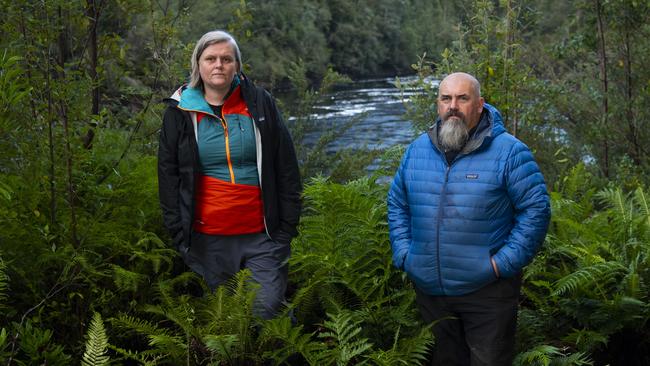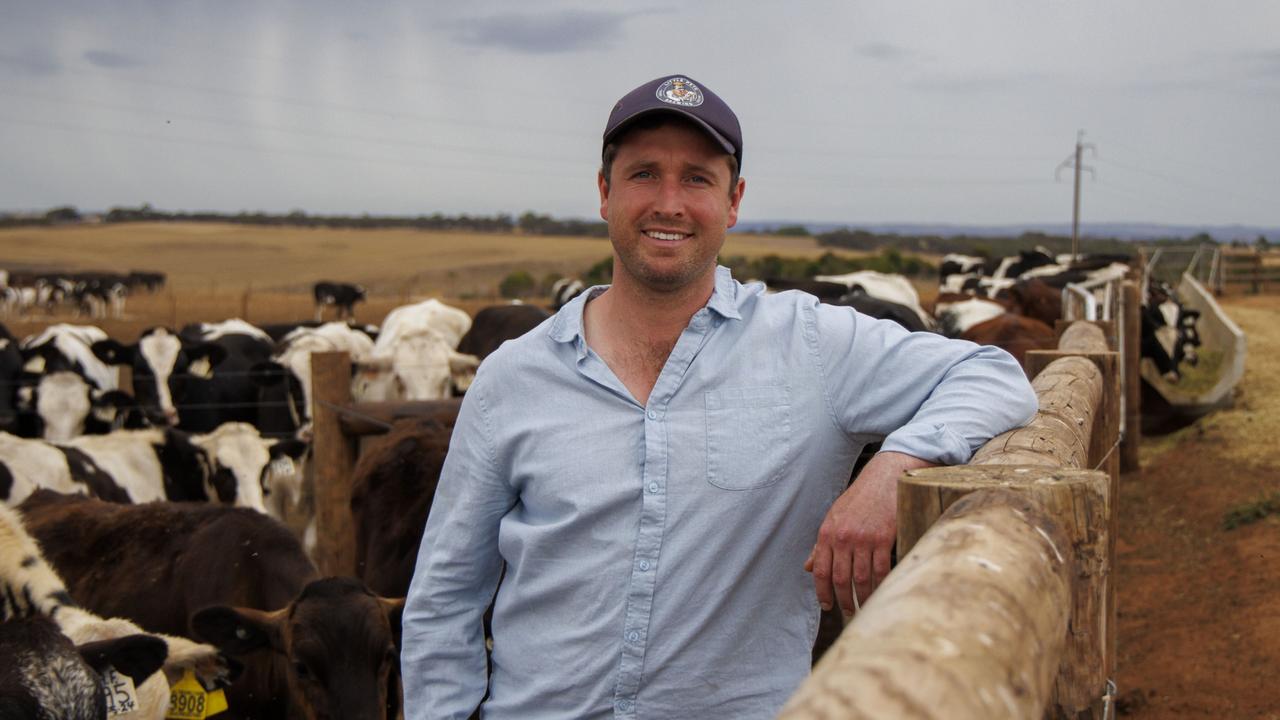Feds drawn into fight over China miner’s rainforest toxic dump
Amid the tannin-stained waters and ancient rainforests of Tasmania’s west a new environmental stoush has erupted.

Amid the tannin-stained waters and ancient rainforests of Tasmania’s west, a new environmental stoush has erupted, placing the Morrison government between a Chinese government-owned mining giant and Bob Brown-backed protesters.
MMG – 74 per cent owned by Beijing’s China Minmetals – urgently needs a new tailings dam to extend the life of the 85-year-old zinc, copper and lead mine at Rosebery.
Its preferred option – awaiting federal government environmental approval – involves piping the waste 3.5km, over the Pieman River, to a 140ha tailings dam, in the process clearing up to 285ha, including rainforest.
MMG has threatened to close the mine if the tailings dam is not approved, but arrests have already been made in what a new generation of activists say is “our Franklin Dam”.
“They are proposing to pump 25 million cubic metres of toxic acid-producing tailings across the Pieman River and dump them into an area of World Heritage and National Heritage-verified and valued forests,” said Scott Jordan, Bob Brown Foundation’s Tarkine/takayna campaigner.
“The tailings dam itself will be 70 Melbourne Cricket Grounds in size and the total footprint, including roading and infrastructure, will come to 285ha.
“That’s a massive impact on an area that should have been national heritage-listed and should have been nominated for World Heritage listing a decade ago.”
Dr Brown has written to federal Environment Minister Sussan Ley asking her to visit the area, and is urging MMG to build the new tailings dam at less sensitive sites on its side of the river.
“Putting a pipe over the river to smash down a priceless, wildlife-filled glen of ancient rainforest and fill it with toxic tailings is the worst environmental choice,” Dr Brown said.
“Sussan Ley will (surely) ensure one of the prudent and feasible options is taken up. It’s a no-brainer.”
Mr Jordan said MMG’s ownership was relevant. “We have a company owned by a foreign government pushing to destroy a world-heritage worthy site in Australia,” he said.
MMG spokesman Troy Hey said the company was still looking at other site options but had sought approval for its preferred option because time was running out. “Without a new tailings facility, we run out of capacity towards 2023 and we risk progressively closing the asset,” he said.
“This site is the one we have done the most work on and at the moment represents the best balance of safety, capital – in terms of how close it is to the mine – and it’s within our existing mining lease.”
He conceded the company had not conducted all environmental studies needed to determine the project’s level of impact on federally listed species, blaming protesters for preventing access.
Mr Hey said the company’s majority Chinese state ownership had “nothing to do with” the issues at Rosebery.
The final say will rest with Ms Ley, who must make a decision in coming weeks on what form of assessment, if any, she will require of MMG.
A report submitted to her by the company confirms the possible presence of threatened fauna, including the Tasmanian wedged tailed eagle, which has “suitable nesting habitat adjacent” to the site and at least “one nest within 1km”.
It also concedes Tasmanian devil dens may be present and that “preclearance surveys will be required”, while spotted-tailed quolls are “likely to utilise the site”.
Protesters who had camped at the site from December until this week, when police moved them on, said there was no doubt threatened species were in the bulldozers’ path, as they had seen and heard them.
The bigger picture, they say, is a “death of a thousand cuts” for the broader Tarkine region, which the National Heritage Council in 2012 found had “outstanding national heritage significance”, “extensive high-quality wilderness and natural landscape values as well as the largest tract of cool temperate rainforest in Australia”.
Acting West Coast mayor Shane Pitt did not believe the proposed tailings dam was in the Tarkine, a loosely defined region. “It’s nowhere near the Tarkine, which seems to move all the time,” he said.
Mr Pitt said most locals wanted to ensure the mine, a key local employer, remained open and he was confident “all environment regulations will be followed”.
Independent expert reports have recommended national and world heritage listings for parts of the Tarkine rainforest over recent decades, but federal governments, fearing impacts on mining and forestry in the marginal seat of Braddon, have resisted.



